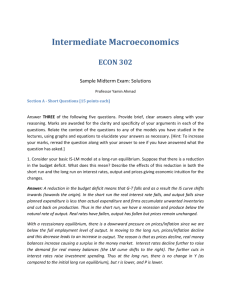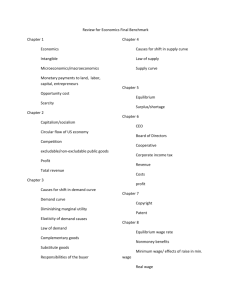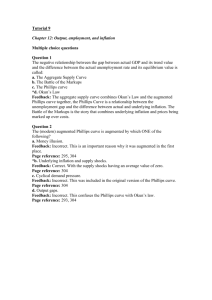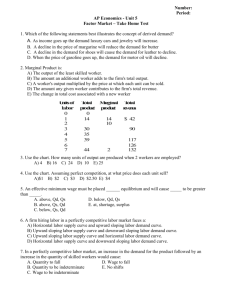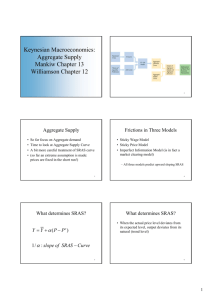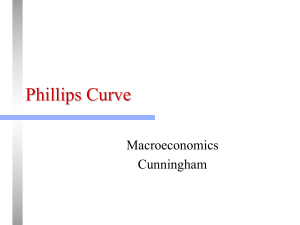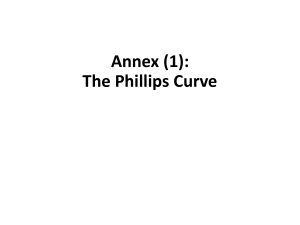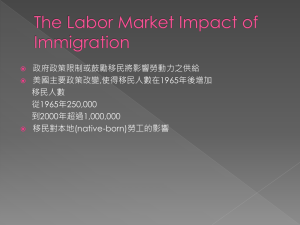Tutorial 9
advertisement
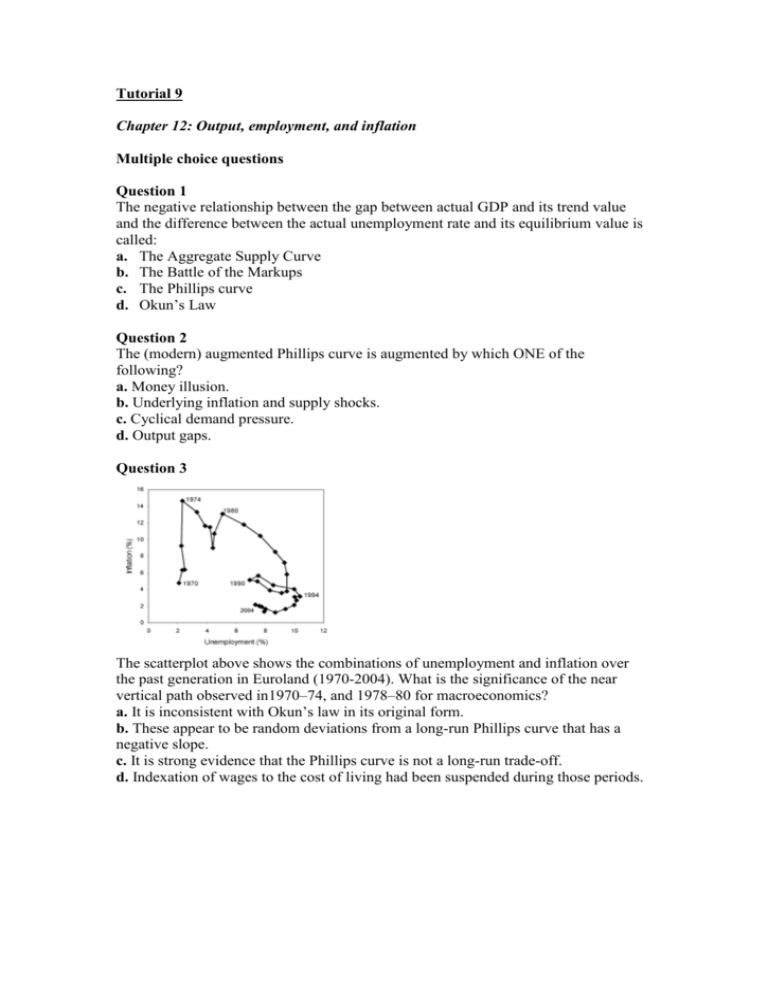
Tutorial 9 Chapter 12: Output, employment, and inflation Multiple choice questions Question 1 The negative relationship between the gap between actual GDP and its trend value and the difference between the actual unemployment rate and its equilibrium value is called: a. The Aggregate Supply Curve b. The Battle of the Markups c. The Phillips curve d. Okun’s Law Question 2 The (modern) augmented Phillips curve is augmented by which ONE of the following? a. Money illusion. b. Underlying inflation and supply shocks. c. Cyclical demand pressure. d. Output gaps. Question 3 The scatterplot above shows the combinations of unemployment and inflation over the past generation in Euroland (1970-2004). What is the significance of the near vertical path observed in1970–74, and 1978–80 for macroeconomics? a. It is inconsistent with Okun’s law in its original form. b. These appear to be random deviations from a long-run Phillips curve that has a negative slope. c. It is strong evidence that the Phillips curve is not a long-run trade-off. d. Indexation of wages to the cost of living had been suspended during those periods. Question 4 WL 1 sL P eY This equation is the description of wage negotiations used in the ‘battle of the markups’. Which ONE of the following explains the difference between the sL – terms on the left and the right side of this equation? a. The left-hand side sL is expected unit labour cost, whereas sL on the right-hand side is the historical ‘normal’ unit labour cost. b. The left-hand side sL is the expected wage share, whereas sL on the right-hand side is the actual negotiated wage share. c. The left-hand side sL is the actual negotiated wage share, whereas sL on the righthand side is the historical ‘normal’ wage share. d. The left-hand side sL is the unions’ preferred wage share, whereas sL on the righthand side is the employers’ preferred wage share. Given is the following equation: sL Question 5 Which ONE of the following factors is NOT relevant for the determination of wages set through collective negotiations? a. Productivity gains. b. Supply shocks. c. The state of the business cycle. d. Underlying inflation. Question 6 Which ONE of the following would NOT result in a shift in the aggregate supply curve? a. Changes in trend GDP. b. Stagflation. c. Supply shocks. d. Changes in underlying inflation. Open questions: Exercises 6 and 8 from the book. Extra question: Exercise 9 from the book.

